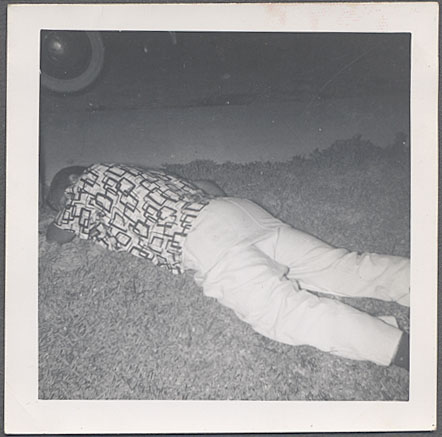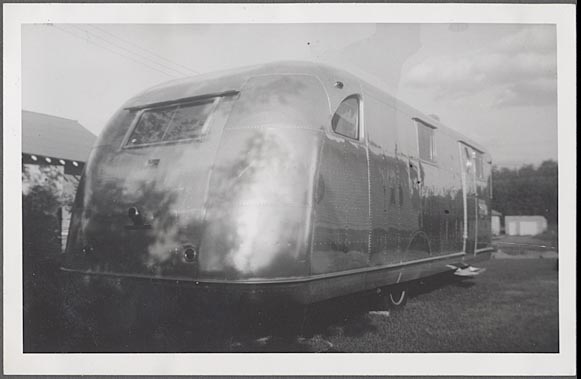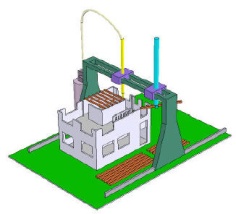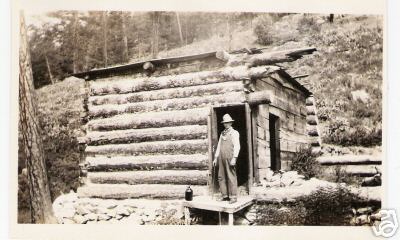Schwarz
View current page
...more recent posts
extrude-o house - its back!
plug and play house construction
"Look at that," Kieran says, leading me into a small, tidy space filled with neat bundles of flexible orange tubing. Bolted to the wall is a row of black manifold boxes, each the size of a coffee cup. "It's beautiful. It's like the engine of a car." He's right; it looks less like a typical utility space – meters and junction boxes crammed with wires that splay off in all directions – and more like a piece of industrial design, crafted with planning and precision. And for good reason: This room and two more like it hold the house's high tech systems. It arrived at the site as a single unit stuffed with a tankless water heater, pumps, and other equipment ready to hook into the air, water, data, and power systems.
[....]
In 2001, after studying how the automotive, aircraft, and shipbuilding industries had revolutionized themselves over the previous 15 years, Kieran and Timberlake realized that architecture needed the equivalent of an integrated circuit. They began to combine glass, drywall, pipe, and wood frames into finished units, each precision-engineered for cost, beauty, and sustainability. In the Loblolly house, the walls and floors are made of panels (some as tall as 21 feet) that were manufactured with wiring, insulation, plumbing, and ductwork already in place. And the main power systems of the home, including two bathrooms and the galley kitchen, were delivered to the construction site in preassembled, plug-and-play units. After the site was prepared, the 2,200-square-foot house took three weeks to assemble.
memo to self - need a guy who can restore a couple of fifty cent piece size chips in a great tub - not re-coat - i saw an ugly tub truck on the block today.
bob brunquists worlds largest skateboard ramp vid from nyt
allentown hippies

“I call them elephant droppings,” he said. “Fuller’s idea was that of a machine-made object, a pure geometry.”
Most dome dwellers are not so picky.
nesthesiaRobert Stone reflects on how the 1960s changed him, and the rest of the country, in Prime Green.
While many of the city's homes were wrecked beyond salvation and clearly need to be demolished—Lentz's own historic house in the Tremé neighborhood was partially knocked over by Katrina winds and subsequently carted away—Lentz and others are becoming alarmed that so many of the city's homes in historic districts are being torn down, often with flood damage used as a pretext. It's as if New Orleans is now at risk of being ravaged by another flood—that of demolitions.
"New Orleans' incredible inventory of historical structures forms its single most valuable resource," says Richard Campanella, associate director of the Center for Bioenvironmental Research at Tulane University and author of a much-praised book, Geographies of New Orleans: Urban Fabrics Before the Storm. "Tearing them down when other options exist is a lazy, short-sighted decision that will be regretted by future generations."
generic names for soft drinks
via vz
its a clean machine
steinberg at the morgan
marc newson gagoisian pieces
This is the fertile territory explored by Professor David Edgerton of Imperial College in his new book, The Shock of the Old. In it he eviscerates our obsession with novelty. It's time, he argues, to look at the history of science and technology in a new way. It's blindingly obvious, really. Instead of recording the history of when devices and processes were invented or predicted, why not look at the way we really use things?
I find him in Buenos Aires for Christmas - he was born in Uruguay, of an English father and Argentine mother. He knows that Fray Bentos is a real place, not just a brand of corned beef. And not just a real place, but a remarkable example of 19th and 20th century industrialized food production whose scale and efficiency - without need even of refrigeration - rivals anything in the world today. Our shops are still full of such canned food, an alternative, older technology we never stop to think about.
We are both alive to the irony of the fact that, in an online age, we are talking to each other by telephone, a 19th century invention. I mention the fact that outside my window is an ancient wooden pole sprouting copper wires in a way the Victorians would have recognised, and that our words are passing through it. 'Ah yes,' he shoots back, 'But you'll find that the wires have changed, the exchanges are different. It's like today's airliners. They're no faster now than they were in the 1950s, but they're more efficient'.
At the moment when Pablo Picasso shook up the art world in 1907 with his painting Les Demoiselles d'Avignon — considered to be the first Cubist painting — there was a contingent of Czech artists working in the French capital. A number of these Czech artists were ignited by the Spaniard's discoveries and quickly conveyed the movement eastward, turning Prague into Cubism's "second center." Then something remarkable happened: Czech artists translated the French-born style not only into paint and bronze, but also into brick, concrete and stone, creating the world's first — and only — Cubist buildings.
The exhibition introduces the primary players in Czech Cubist architecture, along with the best-known Cubist buildings, some lesser-known examples, and some designs that never made it off the drawing board. In the center of the room are architectural models of four choice buildings, and there is additionally a small selection of Cubist decorative art.
Leading the procession of Czech Cubist architects is Pavel Janák, who broke away from the established Mánes Association of Fine Artists to become a founding member in 1911 of the more avant-garde Group of Artists and start the magazine Artistic Monthly. His influential essay, "The Prism and the Pyramid," published the same year, is translated into English in the book accompanying the exhibition. Janák also holds the distinction of being the first to complete a Cubist building, the Jakubec house in the central Bohemian town of Ji?ín in 1912.
in amongst the 50 best cartoons list i recently linked to is thurbers unicorn in the garden. with these youtube files i like to click full screen option then push my chair back till the pixels recede.
i think i may change my blog picture to this :
i got it in the mail today small but nice. minus the camera water mark.
schwarz top 10 2006
1) pirate ballads
2) cady noland aproximately
3) rip wfmu message board and im not lisa
4) bartok radio
5) youtube stooges no fun
6) vinalhaven deck demo
7) grubby clark
8) colbert speaks truth to power
9) parrino in geneva
10) NO rebuilds
honorable mention: ambergris
and dems taking back congress
hawk mountain (out by my brothers house)
s9yard

Leibniz, himself no stranger to strange ideas about language, is said to have recognized the transcendent quality of this work by coining the French verb goropizer ("goropize") to mean "invent absurd etymologies". So it's fitting that in honor of Dr. Goropius Becanus, an anonymous benefactor has endowed the prestigious Goropius Becanus Prize, awarded to people or organizations who have made outstanding contributions to linguistic misinformation.
sheeler in doylestown
BARTLETT COWDREY: When you came to New York, what were the art galleries? When, you went looking for paintings, what did you see, what was then contemporary?
CHARLES SHEELER: ...not only to see, but find one of them that would take their, foot out of the door and let me in.
BARTLETT COWDREY: I suppose Steiglitz...
CHARLES SHEELER: I never had anyone. Steiglitz was interested in a sort of semi-remote way, but I never was represented in any of his shows.
BARTLETT COWDREY: I mean in your spare time, if you wanted to see (American) paintings, what was new in your time?
CHARLES SHEELER: Well it seemed to me at that time, this couldn't be final necessarily, but living in Philadelphia, there would be super-colossal exhibitions, you know, where old masters and all the great names among collectors would have loaned pictures, and I would, if I could get the railroad fare together, and a dollar for overnight in a (New York) rooming house I would come over and spend a couple of days seeing...
BARTLETT COWDREY: What about Kraushaar and Knoedler?
CHARLES SHEELER: Of course I saw and was also a participant in the Armory Show.
BARTLETT COWDREY: 1913.
CHARLES SHEELER: And the First Independents.
BARTLETT COWDREY: 1917. Can you make a comparison between the Armory Show and the First Independents? The Armory was international, I realize, but...
CHARLES SHEELER: Yes, well it was; the eye-opener, the great eyeopener. The Independents just gave a chance to some of the local boys to...
BARTLETT COWDREY: But that was the wonderful thing.
CHARLES SHEELER: Yes, it was important, but the Armory Show gave the green light that it was all right to exhibit pictures like that.


